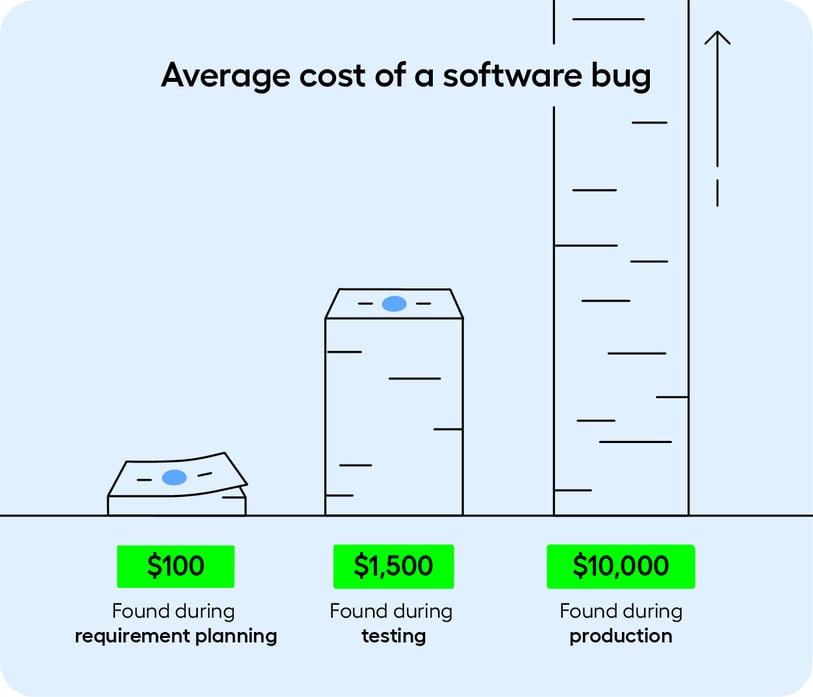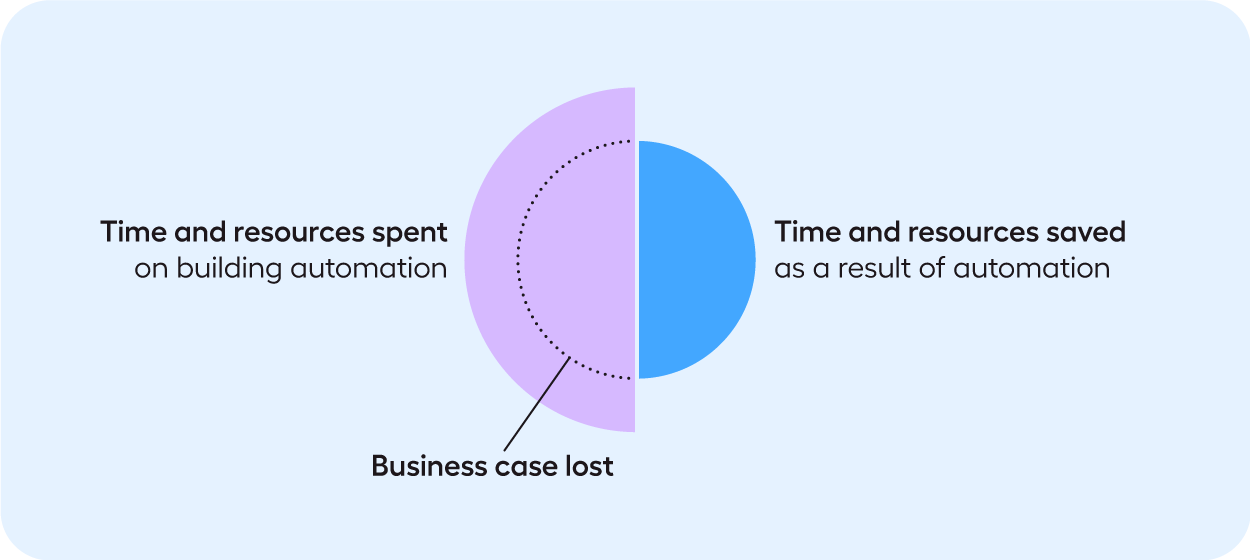What is QA Testing?
What is QA testing? And why should you care about it? For years, quality assurance (QA) has been the underdog. An undervalued department. That’s now changing. With digitalization on everyone's agenda – a high-quality customer experience has become paramount.
“Most CIOs now value testing more than ever before, and the onward march towards digitalization is ensuring that customer experience and quality are of utmost importance” - World Quality Report 21/22
We'll take a closer look at what QA is in the context of software development. Then, we’ll dive into the role testing has to play in QA.
What is QA?
In software development, QA makes sure that software is working as it should.
Typically, the processes put in place by QA ensure that software meets the requirements of a particular project. Whether that’s building a new feature for your company's CRM system, customizing a feature of a platform, or even just making sure that a software release won’t interfere with other processes.
With quality processes in place, you can limit the number of errors in development and production.
This is why QA can be considered a shift-left approach to software development.
Where does QA sit in an organization?
QA can be an independent group. But they can also be housed elsewhere, such as engineering or operations.
Some would argue that it is better for a QA team to be an independent function. That way, they are less prone to being pushed off track by other departments' objectives.
So what does it mean in the context of testing? We’ll cover that in the next section.
What is QA testing?
The way you test your software is core to being able to achieve QA goals. Because of this, testing is commonly a part of a QA team.
Testers ensure that bugs in a development and production environment are found before they go live.
It is at this stage of developing and producing software that quality is most at risk. And that is because testing can quickly become a very time-consuming task.
The challenge with QA testing
When you’re testing manually, you’re only testing areas considered to be the highest risk. There aren’t always enough resources to test beyond that point.
This makes it more likely that a bug goes undetected and reaches a live environment, making QA and product verification slow and difficult.

The shift towards test automation
Naturally, businesses consider adopting test automation as a way to speed up testing, and improve the quality of their software.
If that solution is code-based, it can introduce additional challenges. It puts the ownership into the hands of a few select people, and not the whole test team.
Scaling testing then becomes more difficult because the automation is dependent on resources with highly-technical skills.
This creates a skills gap in QA test automation teams. The people testing the software are expected to also have development skills so that they can build test automation. But these profiles are not common.
“We see a trend towards wanting QA engineers who have developer-type skills, who yet retain their quality mindset and business-cum-user centricity. Is this expecting too much? Yes, we think so. Only a few QA professionals can have all these skills in their repertoire.” - Capgemini World Quality Report 2020-21
If you don’t have code-capable testers, it makes it harder to onboard and get wide-scale adoption of test automation.
And the code-capable testers that you do have spend the majority of their time writing and maintaining code-based automation. It’s both a waste of resources and it’s cost-intensive.

So how can you support testers and QA engineers?
How to make QA the powerhouse of productivity and faster time to market
Make automation a top priority. It's not just about selecting any old tool. It's about choosing the right one for your business. A tool that doesn’t cause more headaches than it’s worth.
Tools that are easier to maintain with reusable components and methods to quickly identify if tests have passed and failed are especially useful to traditional testers, who are business experts rather than technical experts.
If you're able to empower all testers to build test automation (whether they are a business user, test engineer, or QA manager) you become more efficient and less reliant onmanual testing as your primary method of testing software.
To learn more about building a productive and effective QA testing team, you can join our on-demand webinar on building a successful test automation strategy.
You’ll learn how to develop an agile test automation strategy, how to select the right tool, and how to start building automated test cases that deliver a fast ROI.

